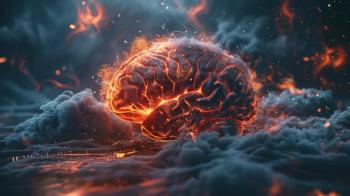
The Walking Cure
As we slowly and cautiously work toward a practice where space can be shared between therapist and patient, perhaps Freud’s “walking cure” can be enlightening.
THIS MONTH IN PSYCHIATRY
by David A. Sasso, MD, MPH, for the Group for the Advancement of Psychiatry Committee on the Arts and Humanities.
August has long been known as the therapist’s holiday, the month when psychoanalysts traditionally pause intensive work for time away from the office. There are countless references to the difficulties patients may encounter during this late summer month, caricatured to hilarious proportions in the 1991 movie What About Bob? Here is a look at a historic August vacation interrupted and some lessons for the unprecedented predicament of psychotherapy in the age of a pandemic.
On August 26, 1910, 2 men were seen taking a long stroll through the streets of Leiden in Holland. Both in their early 50s, one would go on to live another 29 years, and one would be dead by the following May. From a distance, perhaps they appeared to be old friends or colleagues, engrossed in deep conversation. Locals may have guessed that one was seeking counsel from the other and in some distress. While the name of the town, Leiden, is said to come from a Germanic word meaning “canal” or “river,” the German word leiden also means to suffer or to endure. The 2 participants in this Friday afternoon promenade were in fact Gustav Mahler and Sigmund Freud. And far more than a casual chat, it was a single extended 4-hour therapy session: the brief psychoanalysis of Mahler by Freud.
Many have written about the details of the encounter. Mahler had been working on his never completed 10th symphony and had become greatly distressed that his wife, Alma, was having an affair with architect Walter Gropius (whom Alma would go on to marry 4 years after Mahler’s death). Freud made several interpretations that astounded Mahler, including surmising the name of Mahler’s mother and identifying a “mother fixation,” suggesting that Mahler was “seeking his mother in every woman.”1 This analysis gave Mahler some relief and helped him to connect 2 childhood memories: a scene of conflict between his parents and hearing a folk-song played on a hurdy-gurdy in the street. Freud later recalled, “Mahler thought from this moment on, deep tragedy and superficial entertainment were tied together indissolubly in his soul and that one mood was inevitably tied to the other.”2
Leaving aside the content of the session, the context is instructive. Mahler had previously made and broken 2 appointments with Freud earlier that summer, and when he requested a third, the only solution was to meet near the spot in southern Holland where Freud was spending the month. This was inconvenient for Freud; not only was he on vacation, but he also was exhausted by the recent International Congress of Psychoanalysis at Nuremberg and was recovering from a bout of colitis.3 He was also far from his office, so the meeting had to be conducted on foot. Freud later described details of his session with Mahler in now-jarring disclosures to his analysand Maria Bonaparte some 15 years later. Noting his departure from typical August holiday norms, he confessed, “I made an exception in receiving someone during my vacation, but a man like Mahler . . .”4
This snapshot of Freud runs counter to how many view him and his theories today. There are some who imagine Freud to have been rigid in his thinking and his psychoanalytic frame unbending in its approach. That may have been the advice he gave to others, but, for better or for worse, he often broke his own rules, as in this case: seeing a patient in the middle of his vacation, conducting therapy outside the office, for any local passersby to see. In many instances, Freud’s behavior with his patients would not be considered Freudian at all in the
As we reconcile the challenges facing the practice of psychotherapy today with myriad restrictions necessary to stem the spread of the novel coronavirus, there are lessons to draw from the man whose legacy, unfortunately, is sometimes ridiculed as inflexible, rule-bound, and out-of-date.
Before the pandemic, many psychiatrists would have dismissed the possibility of effective psychotherapy occurring through video. Yet, by necessity, the field has adapted and learned to shed the trappings and comforts of carefully decorated offices, couches, and armchairs, and distance from homes, pets, and children. Just as Freud made do with a set of circumstances that prevented him from working in his accustomed way, today’s psychiatrists can take a lesson. The safety and boundaries of the enclosed office, with a therapeutic frame sealed off from the outside world are, paradoxically, no longer safe, so we have turned to virtual settings.
As we slowly and cautiously work toward a practice where space can be shared between therapist and patient, perhaps Freud’s “walking cure” can be enlightening. Sessions out of doors may still seem as hard to imagine as video sessions were for many therapists just months ago. But perhaps in the coming months they may offer a starting point to think about reconnecting in person with our patients in a safer shared physical space than the office. Issues around confidentiality, admittedly, will not be easy to resolve. How will we create, flexibly but thoughtfully, new frames in order to maintain the holding environment and expectation of privacy that makes the consulting room sacred?
As you ponder these questions, if you have never listened to the first movement of Mahler’s painfully gorgeous and unfinished Symphony No. 10, find a moment to do so this month in honor of a peripatetic therapy session that took place 110 years ago.
Dr Sassois a child and adolescent psychiatrist and musician in New Haven, CT, where he serves as Assistant Clinical Professor in the Child Study Center at the Yale University School of Medicine.
Acknowledgement: Members of the Group for the Advancement of Psychiatry Committee on the Arts & Humanities: David Sasso, MD, MPH (Committee Chair); Anish Ranjan Dube, MD, MPH, Volunteer Clinical Faculty, University of California, Irvine; Donald Fidler, MD, FRCP-I, Professor Emeritus, West Virginia University; Andrew Lustbader, MD, Associate Clinical Professor in the Child Study Center, Yale University School of Medicine; Chris Snowdy, MD, Program Director, USC Child and Adolescent Psychiatry Fellowship; Kenneth J. Weiss, MD, Robert L. Sadoff Clinical Professor of Forensic Psychiatry, Perelman School of Medicine, University of Pennsylvania, andHelena Winston, MD, Assistant Professor, Department of Psychiatry, University of Colorado.
References
1. Floros C. Gustav Mahler: The Symphonies. Amadeus Press; 1993.
2. Jones, Das Leben und Werk von Sigmund Freud. In: Floros C. Gustav Mahler: The Symphonies. Amadeus Press; 1993.
3. Feder S. Gustav Mahler: A Life in Crisis. New Haven: Yale University Press; 2004: p. 208.
4. Maria Bonaparte, unpublished diary. In: Feder S. Gustav Mahler: A Life in Crisis. New Haven: Yale University Press; 2004.
5. Lipton S D.
Newsletter
Receive trusted psychiatric news, expert analysis, and clinical insights — subscribe today to support your practice and your patients.













